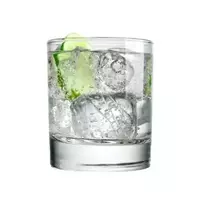Gin and tonic

The invigorating cocktail, the taste of which is so much loved by many, can be drunk not only for the occasion, but also simply for pleasure. Gin-tonic has its own history, as well as the secrets of cooking and consumption, which were invented by the inhabitants of Foggy Albion and date back more than one hundred years.
Gin-tonic appeared back in the time of the famous West Indian campaign, carried out by British troops in the eighteenth century, when the British, not accustomed to harsh conditions, constantly suffered from malaria and scurvy. As the only medicine for malaria in those pores was quinine, on the basis of which tonic was made - a soft drink with special bitterness. That is why it was used exclusively for medical purposes.
The original solution was to mix a tonic with a strong alcoholic drink called gin. It was gin and tonic that saved soldiers from malaria, and limes, which they consumed in almost kilograms, helped them from zinc. This is how the gin and tonic cocktail, so popular today, appeared.
By the way, as part of the gin-tonic of this time, the amount of quinine is much lower, in addition, they try to sweeten the cocktail in every possible way, and therefore it can be used not only for medical purposes. Drinking gin and tonic follows through straws - this is how the fullness of the taste of this beautiful drink is felt and the pleasure of drinking it is stretched.
In addition, gin and tonic is considered a strong enough cocktail, able to cheer up and encourage on a summer afternoon, but only as long as you are still at the table. That is why experienced connoisseurs strongly advise beginners to use gin and tonic in small portions, trying to calculate their strength. The calorie content of gin-tonic is about 7
8. 4 kcal per hundred grams of a low-alcohol drink.
Gin-tonic composition
The excellent gastronomic properties of this drink are directly related to the composition of gin-tonic, which traditionally includes, in fact, gin and tonic in a form cooled to 14-15 degrees, as well as a small slice of lemon and crushed ice. Undoubtedly, over the long existence of gin tonic, a great many varieties of this cocktail have been invented, which are due to the proportional ratio of tonic and gin in a glass.
The classic composition of gin-tonic involves the use of a strong drink and tonic water in a ratio of 1 to
2. Lemon requires just one mug, while it is recommended to bring the amount of food ice to a third of the entire glass.
Having prepared gin and tonic from high quality components, it will become clear why this drink has gained worldwide popularity. By the way, cocktails in plastic and iron cans have absolutely nothing to do with the legendary gin and tonic and, moreover, they are full of preservatives.
gina-tonic 78.4 kCal
Energy value of gin-tonic (Ratio of proteins, fats, carbohydrates - ju):
Proteins: 0 g (~ 0 kCal)
Fats: 0 g (~ 0 kCal)
Carbohydrates: 6.7 g (~ 27 kCal)
Energy ratio (bj | y): 0% | 0% | 34%
 Español
Español Français
Français Português
Português Русский
Русский 简体中文
简体中文 繁體中文
繁體中文 日本語
日本語 한국어
한국어 العربية
العربية Türkçe
Türkçe Қазақ
Қазақ Deutsch
Deutsch Italiano
Italiano Українська
Українська
